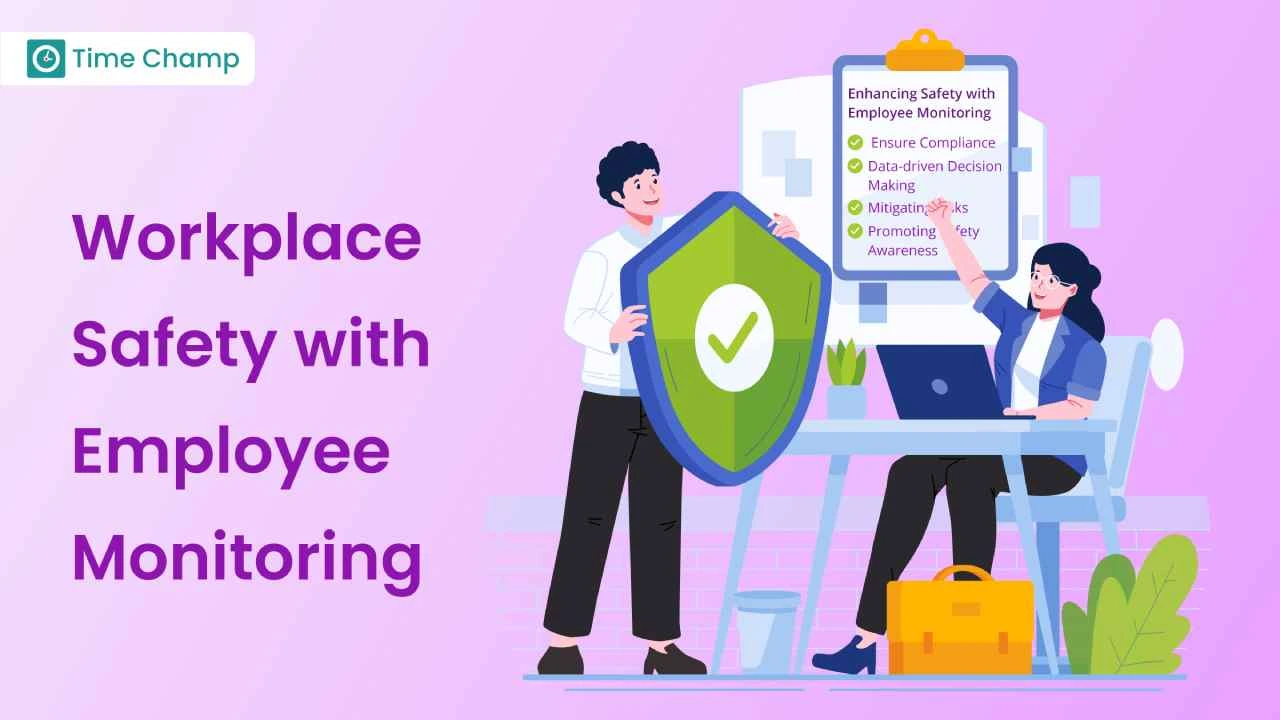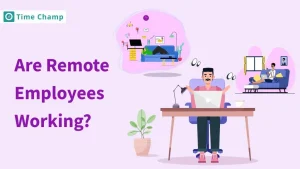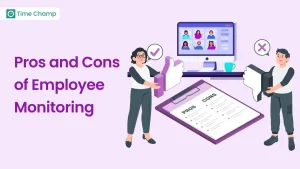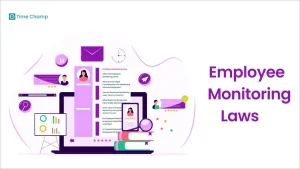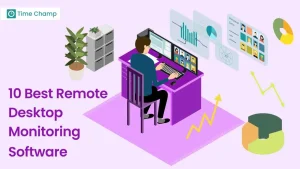Let’s talk about something that’s on everyone’s mind: workplace safety. You may not believe it, but employee monitoring can go a long way in ensuring workplace safety. It is not just about control, it is about prevention, using the best tools and coming up with an excellent early warning system. If you know how your employees do their work and how they respond to organizational factors, you can design a better and safer work environment based on real needs and abilities. Now let’s take a deeper look at how the concept of employee monitoring can prove beneficial for your team’s safety.
Enhancing Workplace Safety with Employee Monitoring:
In software and IT industries, workplace safety is not limited to physical risks but also encompasses digital and operational risks. The monitoring of employees is very important in the development of a safer and more efficient work environment. Here’s how:
Safeguarding Against Cybersecurity Threats:
Cybersecurity threats are a reality in a world that depends on computers and the internet. Employee monitoring can be your first line of defence. Thus, it is possible to monitor such actions as attempts to enter under an unauthorized access or download prohibited files. These early warnings assist you in taking the right measures to ensure that such breaches do not escalate. Safeguarding your systems and data allows your team to do their work without the daily worry of being hacked.
Ensuring Compliance with IT Policies:
IT policies are the building blocks of your company’s security program. The problem is that it is not always easy to ensure that all people adhere to these policies. This is made easier using the employee monitoring tools which have integrated features for compliance tracking. One can monitor whether the employees are using only the software that has been approved, using passwords or handling sensitive data in the right manner. If there is an error, you will know it and correct it, which makes the environment safe and secure.
Monitoring Productivity and Preventing Burnout:
It is crucial to balance work and health in the long-term perspective to be effective in the job. Monitoring provides you with information about how your team is doing—whether they are working overtime or working at night. If some of the employees are often coming to work during their off time, then it could be that they are burnt out. If this is not done early enough, it may be necessary to reshuffle the tasks or to encourage the team to take a break to maintain the health of the team. A well-rested team is a productive team and a team that is less likely to make mistakes and therefore the chances of accidents are minimized.
Detecting and Addressing Workflow Inefficiencies:
Even in the best teams, there are always inefficiencies that creep in and slow down the work and frustrate the workers. Employee monitoring gives you the information that you require to identify areas that may be going wrong. For instance, if a specific process is a source of a problem, the data will help to identify where the problem is in detail. Once you have identified them, you can then work to eliminate them by changing communication, and timelines, or adding more resources. The end product is a more efficient process that allows your team to work on their tasks without hitting roadblocks.
Promoting Secure Remote Work Practices:
Although flexibility is one of the advantages of working remotely, it also poses new security risks. Since employees are accessing the work from different locations, it is important to ensure that work practices are secure. Management tools help in monitoring how your team is handling remote work—whether they are connecting through secure VPNs, using public Wi-Fi to access sensitive information, and taking other necessary data security measures to stay safe online. Thus, following these standards, you protect your organization from the risks associated with remote work and guarantee the safety of your employees.
Best Practices for Implementing Employee Monitoring with Safety in Mind:
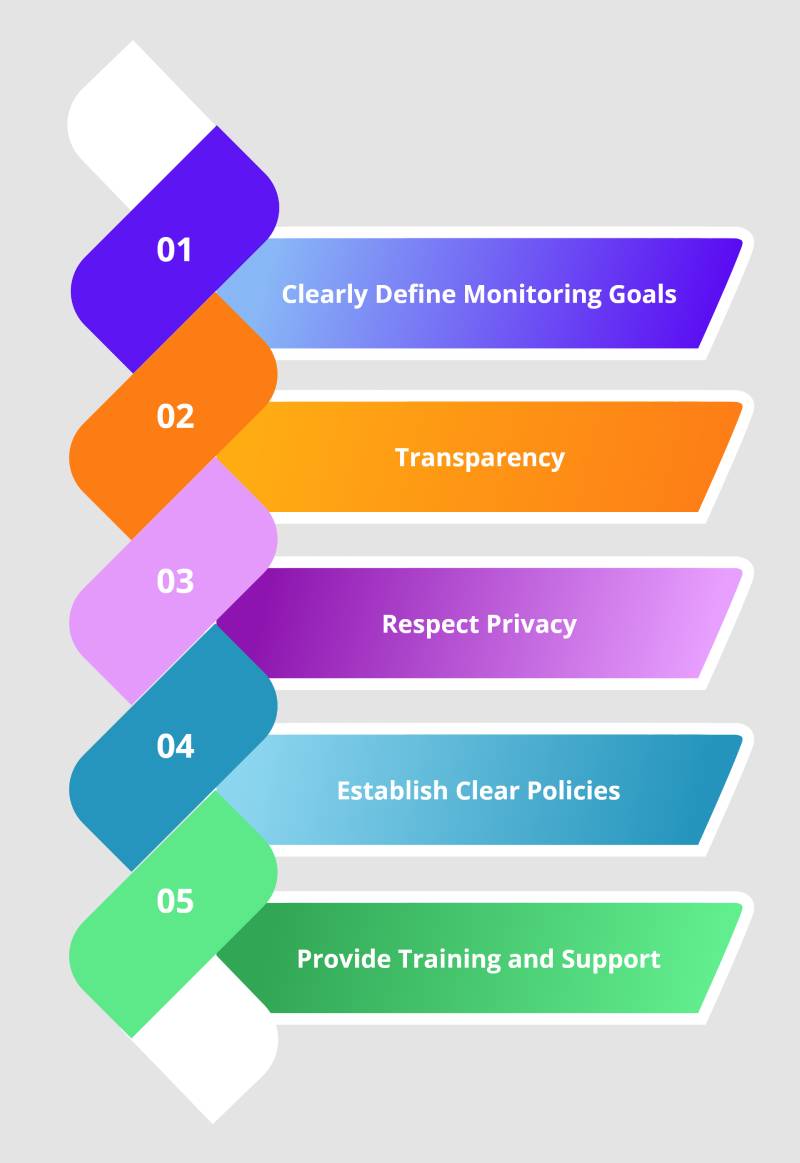
Following are the practices for implementing employee monitoring with safety in mind.
Clearly Define Monitoring Goals:
First of all, it is crucial to define the goal of employee monitoring. Is it to minimize hazards at the workplace, improve productivity, or both? Setting such goals from the start helps everyone to know why monitoring is important and how it is going to help.
Transparency:
Ensure that your team understands what you are monitoring, why you are doing it, and how it benefits them and the organization. Transparency assists in addressing the problems of trust and privacy.
Respect Privacy:
Respecting privacy is key. Make sure that your monitoring process does not cause any offence to any employee or intrude into their personal space. Employees should be given the opportunity to opt out of monitoring during their off-working hours. This ensures that employees can balance their work and personal lives and that their privacy is valued even after working hours, thus fostering trust and a healthy organizational culture that enhances productivity.
Establish Clear Policies:
Establish policies concerning employee monitoring. Decide what behaviours or activities will be recorded, how the data will be collected and stored, who will have access to the data and for what reasons. Policies are crucial because they assist in establishing rules and organization.
Provide Training and Support:
Support your team through training. Inform the employees about the monitoring, its purpose, how it will be conducted, and the implications of the process. Provide support options for any issues that may be raised by the users. Training is important to make sure that all employees are aware of the monitoring procedures and adhere to them.
Evaluating the Impact of Employee Monitoring on Safety:
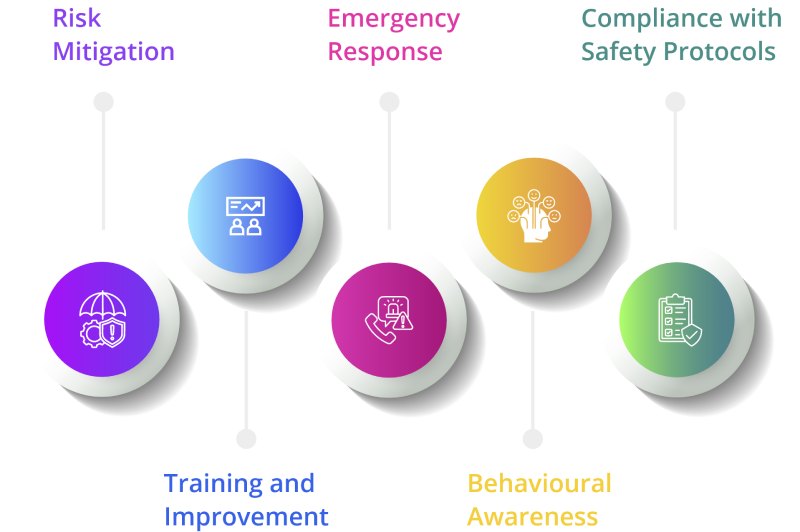
Let’s see about the impact of employee monitoring on safety.
Risk Mitigation:
Risk management is a critical factor in any organization, and employee monitoring is one of the ways of minimizing risks in your workplace. This way, you can monitor the activities and behaviours of the employees and prevent the occurrence of hazards at an early stage. This makes it possible for you to prevent risks before they become worse, thus making the environment safer for everyone.
Emergency Response:
Monitoring helps in the provision of timely and effective responses to emergencies. Real-time tracking of employees is also useful in evacuation, sending alerts to the employees, and guaranteeing their safety during emergencies. This way, you can be more proactive and responsive when the need arises most.
Compliance with Safety Protocols:
Monitoring helps in making sure that your team is observing safety measures in the right way. In this way, you can quickly see if there are any issues with how closely the employees follow these guidelines. This not only ensures that your workplace is safe but also reduces the chances of having an accident or failing to adhere to the set regulations.
Training and Improvement:
Monitoring provides useful information for staff development and enhancing safety procedures. This way you can see where more training is required and where less is required. This continuous learning assists the employees to be more informed and knowledgeable in safety hence improving the safety performance.
Behavioural Awareness:
Monitoring allows you to understand how the employee’s behaviour affects safety. You will be able to notice patterns in how they follow safety measures and how they use their work tools, such as computers and software. This allows you to deal with any risky behaviours with a word of advice to ensure your team’s safety.
Future Directions in Workplace Safety and Monitoring:
Now it is time to know about future innovations in workplace safety and monitoring.
Embracing Advanced Monitoring Technologies:
In workplace safety today, technology is crucial, especially in monitoring. They provide real-time data and forecasting to help avoid risks before they occur. Employers are thus able to enhance safety measures, and consequently, change workplaces into safer and more sensitive to safety risks.
Proactive Safety Culture Through Innovation:
Proactive safety culture development innovation entails the use of advanced tools to enhance safety. By employing monitoring technologies such as real-time monitoring and predictive analytics, managers can identify risks at an early stage. This approach not only improves the safety standards but also helps in raising awareness and ensuring the employees’ compliance with safety measures. Embracing these innovations allows managers to direct their subordinates towards safer working conditions and preparedness for risks.
Integrating Real-Time Analytics:
Real-time analytics is a game-changer when it comes to safety in the workplace. Consider the possibility of being able to get updates on how compliance with safety measures is being done. Real-time analytics also help you identify any problems as they are developing so that you can deal with them before they worsen. This technology assists managers in decision-making to provide a safer and more efficient working environment. Real-time analytics are about embracing the future and being able to manage risks and keep everyone safe.
Enhancing Productivity and Safety:
Picture a workplace where efficiency and protection of employees are not mutually exclusive. Using modern monitoring tools, you can observe how tasks are performed and identify safety problems in advance. This means that you can easily adjust the settings to make sure everyone is safe while at the same time enhancing efficiency. When employees are safe at work, they can focus on their work hence increasing productivity. Safety is not only the lack of accidents but also the efficiency of organizational activities, which are not hampered and have a favourable climate.
Unlock Enhanced Workplace Safety with Time Champ!
Time Champ assists in employee monitoring to increase the safety of the workplace since it provides information on how employees perform their tasks and how they move around the workplace. When monitoring the time spent on the tasks, you will be able to notice the signs of tiredness or stress that may lead to an accident.
It also ensures that employees adhere to safety measures, which minimizes the risks. This active employee monitoring not only enhances safety but also makes all people aware that safety is of paramount importance. Time Champ allows you to safeguard the welfare of your team and increase efficiency in a safe manner.
Conclusion
The use of employee monitoring software and real-time analytics technologies to monitor employees enhances the safety and productivity of the workplace. Thus, managers can identify risks that may be present and guarantee that the necessary precautions are taken to avoid accidents, which enhances the safety of employees. Technologies of monitoring and real-time analysis assist managers in identifying safety issues and their response to them, which contributes to the development of a safe and effective environment. This approach not only safeguards the employees but also the organization to ensure that it runs as it should.
Enhance your workplace safety and productivity with Time Champ—get started today!
Signup for FreeBook DemoFrequently Asked Questions
Employee monitoring enables you to identify safety hazards, enforce safety standards, and maintain safety consciousness. It also enhances the response to emergencies and offers information to increase the safety of workplaces in general.
When monitoring employees, it is recommended to be fair and open. Explain what is being monitored, obtain permission, and ensure that monitoring is done for the purpose of increasing safety and efficiency, not as a means of supervision.
Real-time analytics enable you to identify safety concerns as they occur, monitor adherence to safety standards, and respond to issues. This makes your workplace safer and avoids accidents before they occur.
Yes, monitoring employees can be an invasion of their privacy. To avoid this, you should be clear on what is monitored, respect people’s privacy, and make sure that the monitoring is reasonable and for the safety of employees.
Employee monitoring can increase productivity as it allows you to see where there are problems, make sure work is done on time, and offer feedback. It also assists in maintaining the employees’ attention and drive to work hard and deliver their best.
